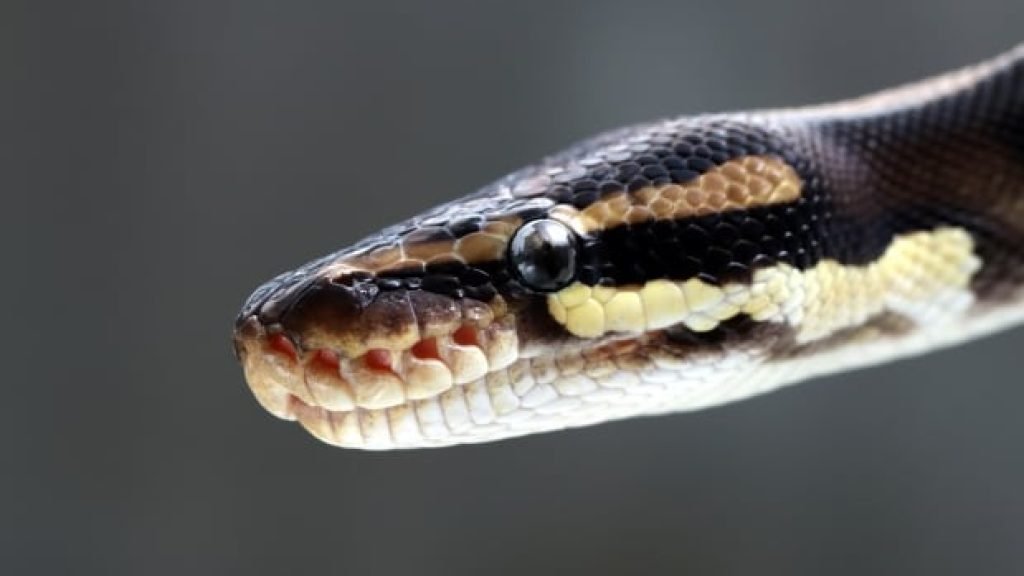
There’s no single agreed upon term for a group of snakes, but scientist Morgan Skinner has a suggestion.
“Cuddle of snakes,” he told As It Happens host Nil Kӧksal. “Maybe that should be the name.”
Skinner, a quantitative ecologist, has co-authored a new study that found ball pythons — long believed to be solitary creatures, and often kept as solo pets — seem to enjoy each other’s company.
The findings, published in the journal Behavioral Ecology and Sociobiology, add to a growing body of research into the surprisingly active social lives of snakes.
It also comes on the tail of several other studies that suggest other seemingly solitary species, including sharks and octopuses, may be more community-oriented than scientists previously believed.
Not so solitary after all
Skinner, who works for an environmental consulting company in Calgary, studied the social dynamics of snakes as part of his doctoral research at Wilfrid Laurier University in Waterloo, Ont.
In 2020, he and his colleagues published research showing that garter snakes, when given the choice, prefer to spend time together rather than alone, and even form something akin to friendships, showing preferences for certain individuals over others.
But garter snakes, Skinner says, were already known to hibernate and birth their young in groups. Ball pythons by contrast, lay eggs and do not hibernate. They’re also a popular pet around the world, and are often kept in isolation.
“I wanted to see what a snake that was less social — in my thinking and in common perception — would do,” he said. “You know, here’s my social snakes and what they do. And how does this compare to a non-social snake?”
Skinner and his colleagues put six ball pythons in a large enclosure for 10 days with enough individual shelters for each snake.
Twice a night the researchers cleaned the enclosure and shuffled the snakes into different shelters. That’s what Skinner was doing when he first laid eyes upon a python “cuddle.”
“To my surprise, when I started lifting up the shelters, the first one I lifted up, they were all there together in one big group,” he said.
He separated the snakes and left. When he came back later for the second shuffle, they were all back together again.
In fact, footage shows the snakes slithering around and exploring their enclosure, but ultimately opting to spend the majority of their time together in one shelter.
“This really challenged my idea of what sociability is in snakes,” Skinner said.

The team started to wonder if there was just something about that particular shelter they preferred. So they took it out.
The snakes, Skinner said, simply congregated in a different shelter.
“We tested four more groups, a total of five, and they chose different home bases. So it wasn’t something about that location or that shelter in particular,” he said.
Unlike the garters, the pythons didn’t form cliques, instead preferring to stick all together.
Vladimir Dinets, a specialist in reptile social behaviour at the University of Tennessee, Knoxville, who was not involved in the study, lauded its methodology.
“I’m kind of impressed at how meticulously they worked out the whole thing and how well they showed this,” Dinets told the New York Times. “I tend to look for flaws in things I read, and I couldn’t find anything to pick on, here.”
Do they also hang out in the wild?
Skinner says he can’t be sure whether ball pythons congregate in the wild the same as they do in captivity, but he says he has seen at least one study of wild pythons that references finding them in burrows.
“It’s quite possible that what we’re seeing is, to some extent, a natural behaviour,” he said. “I think that this social behaviour in snakes inevitably has some benefit to them, whether it’s protection from predators or it helps them, you know, maintain heat and moisture so that they can digest better.”
Because one meal lasts them a long time, Skinner says they’re rarely in competition for food, which could also explain the group dynamics.
Snakes hunt alone, so when people encounter them above ground, they’re usually on their own. That may have led to the misconception that they’re anti-social creatures.
“I think we’re very visual, and when we think of social behaviour, we think of animals like flocks of birds,” he said. “We don’t believe it unless we see it.”
Recent research suggests ball pythons are not the only species that my have been too hastily classified as non-social.
Shark scientists are currently observing two great whites that keep showing up in the same place, challenging the common belief that the apex predators are loners.
A study published this year showed that brown bears interact more frequently outside of mating season than suspected.
New deepsea research over the last decade has revealed that octopuses, who spend most of their lives alone, breed in large groups called nurseries. And new footage of shallow reefs shows octopuses sometimes hunt in groups with fish.
“Most animals need to be social in some way,” Skinner said.







